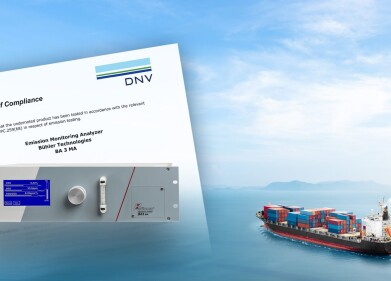Measurement and testing
What Pollutants Does Sulphur Create?
Nov 11 2021
Sulphur isn’t just one of the most abundant chemical compounds on the planet, it’s also one of the most concerning. When the naturally occurring compound is released into the air it interacts with oxygen and forms sulphur dioxide, a gaseous air pollutant known as SO2.
How does SO2 form?
SO2 is formed when sulphur-containing fuels such as oil, diesel and coal are burned. This can occur in a variety of different ways, including large-scale industrial power plants and privately-owned recreational vehicles.
Some of the major dangers of SO2 are listed below:
-
Acid rain
When sulphur dioxide interacts with air and water it forms a corrosive liquid called sulfuric acid. Sulphuric acid is the main component of acid rain and can cause severe environmental damage. As well as destroying forests and other natural ecosystems, it can acidify rivers and contaminate water sources.
-
Greenhouse gases
When sulfuric acid reacts with elemental carbon it forms sulphate aerosols, microscopic pollutants that can increase the lifespan and density of clouds and as a result, contribute to global warming. For this reason, sulphur dioxide is categorised as an indirect greenhouse gas and emissions are closely monitored using state-of-the-art instruments.
-
Particulate matter
Sulphur can compromise the efficiency of emissions control systems and result in higher levels of toxic particles being released into the atmosphere. The implications for air quality are severe, with the Clean Air Act classing sulphur dioxide as a pollutant of concern.
There’s a huge amount of evidence to suggest SO2 is a key contributor to respiratory illness, particularly for children, senior citizens and people with pre-existing health conditions. Long-term exposure to high levels of atmospheric SO2 can permanently damage the lungs and lead to serious heart conditions.
Monitoring sulphur emissions
The immediate threat to environmental and human health means that governments around the world take sulphur emissions seriously. The UK has taken drastic steps to slash sulphur dioxide emissions, with rates falling by a huge 97% since 1970. Progress has been largely fuelled by a phase-out of coal-powered energy, as well as strict limits on sulphur concentrations in liquid fuels.
In the United States, the Environmental Protection Agency regulates sulphur dioxide levels via National Ambient Air Quality Standards (NAAQS) limits. The NAAQS is designed to target a group of major pollutants that pose a threat to both environmental and human health.
Sulphur dioxide isn’t the only chemical compound of concern, with environmental scientists also targeting nitrogen oxides, particulate matter and volatile organic compounds (VOCs). Find out more about how these pollutants are monitored at one of Europe’s busiest maritime hubs in ‘Antwerp aims to be a climate-neutral port by 2050: Environmental Monitoring at One of the World’s Major Ports’.
For more information on sulphur in general, don't miss 'A Complete Guide to Sulphur in Fuel.
Digital Edition
PIN 26.1 Feb/Mar 2025
March 2025
Analytical Instrumentation - Elemental Analysis for Quality and Process Control at Refineries, for Lubricants and Wear Metals in Engine Oils - Synthetic Lubricants: New Developments - Scaling...
View all digital editions
Events
Apr 27 2025 Portland, OR, USA
Apr 29 2025 Mumbai, India
Apr 29 2025 Edmonton, AB, Canada
May 05 2025 Houston, Tx, USA
May 06 2025 Nuremberg, Germany

.jpg)

















